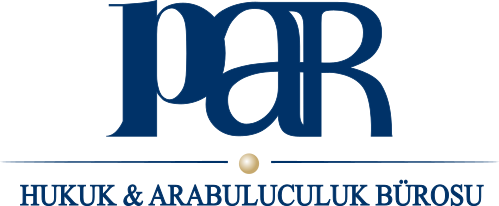
A performing artist is a person who acts as an intermediary in the transmission of a work to the masses by interpreting a work with his/her intellectual labor. Although the performing artist generally performs a work belonging to someone else, there is no obstacle for the performing artist to perform a work belonging to him/herself. In Article 4, paragraph b of the Regulation on Rights Adjacent to the Rights of the Author, it is stated that the concept of performing artist refers to “actors, vocal artists, musicians and dancers, etc. who properly interpret, introduce, narrate, sing, play and perform in various ways works of art and folklore works”.
Only real persons can bear the title of performing artist. It is not possible for a legal person to make an interpretation reflecting his/her artistic personality and talent by presenting his/her intellectual labor. Therefore, it is not possible for legal persons to be qualified as performing artists. On the other hand, only real persons who engage in artistic activities can benefit from the provisions protecting performing artists. The concept of performing artist includes not only those who directly perform the work, that is, play, sing and act, but also conductors, directors and directors who direct the performance of the work with their artistic contributions. In addition, in order for a person to benefit from the provisions protecting performing artists, there must be a performance of an intellectual product that is considered a work. If there is no work, it is not possible to talk about a performance and performing artist. As stated in Article 80/1 of the Law on Intellectual and Artistic Works, in order for a person who performs a work to benefit from the provisions protecting performing artists, he/she must make an original performance. Originality in performance emerges with the interpretation of the work. Originality means that the personal and artistic talent of the performing artist is included in the performance and that the performance is distinguished from other performances due to this quality. Finally, in order for a person to be protected as a performing artist, the performance must be made for third parties. In order to benefit from legal protection as a performing artist, it is not necessary for the performance to be directed to live and present persons or to be performed in the presence of a certain number of persons. Because Article 80 of the Law on Intellectual and Artistic Works states that in addition to direct performance, indirect performance will also benefit from legal protection. For this reason, the performance of a work in a recording or television studio is sufficient to gain the title of performing artist.
In Article 80 of the Law on Intellectual and Artistic Works, it is stipulated that artists who interpret, introduce, narrate, sing, play and perform a work in various ways in an original manner, provided that they do not harm the moral and financial rights of the owner of the work and with the permission of the owner of the work, are related rights holders. Therefore, in order for a person to benefit from the rights granted to the performing artist, they must have obtained permission from the owner of the work. There is no clarity in the Law regarding the legal nature and scope of the permission that the performing artist must obtain from the owner of the work. Article 80 of the Law on Intellectual and Artistic Works includes the expression “who interprets, introduces, narrates, sings, plays and performs a work in an original manner with the permission of the owner of the work”. This provision reveals that in order for the performing artist to have related rights granted to their performance, they must have carried out the performance with the permission of the owner of the work. In addition, the principle of not harming the financial and moral rights of the owner of the work is included in the same article. For this reason, the permission of the author is required both for the performance of the work and for the determination of the performance and for putting it into commercial use.
If a person who performs a work by obtaining permission from the author also meets the conditions for protection as a performing artist, he/she has absolute related rights over the performance as per the provision of the law. In such a case, the authority to grant or prohibit such related rights belongs exclusively to the performing artist. The fact that the performing artist has related rights over the performance does not mean that the rights of the author over the work of the author end or that the financial or moral rights of the author are limited; on the contrary, the rights of the author over the work of the author continue to exist. For this reason, the performing artist benefits from the financial and moral rights granted to him/her under the law in a way that does not harm the rights of the author. However, this benefit must be limited to the purpose of the performance and in accordance with the purpose of the permission.
Article 52 of the Law is applied by analogy in determining the scope of the permission granted to the performing artist. In the said article, it is clearly stipulated that contracts and dispositions regarding financial rights must be in writing and the rights they are about must be shown separately. For this reason, it is not possible to consider the expressions in the contract between the parties as “I transferred all my financial rights” or “I transferred my rights of reproduction etc.” as legally valid. On the other hand, in accordance with Article 80/1-A of the Law on Intellectual and Artistic Works, the performing artist is granted absolute financial and moral rights over his/her performance. The rights in question are limited to those listed in the said article.
Moral Rights of the Performing Artist
• Right to Request to be Identified as the Owner of the Performance
• Right to Prohibit the Performance from Being Altered in a Way That Would Damage the Reputation
Financial Rights of Performing Artists
• Right to Detection
• Right to Reproduction
• Right to Disseminate
• Right to Represent
• Right to Communicate to the Public (Public)
The owner of the financial rights arising from the performance is, as a rule, the performing artist. In this respect, the authority to grant permission regarding the financial rights arising from the performance also belongs to the performing artist as a rule. Since the financial rights arising from the performance will pass to the heirs in the event of the death of the performing artist, the authority to grant permission regarding the financial rights belongs to the heirs. If the performing artist has transferred his financial right, the authority to grant permission regarding the financial right subject to the transfer belongs to the transferee of the financial right. However, if the authority to use the financial right has been transferred, i.e. licensed, the authority to grant permission regarding the right in question belongs to the licensee.
Art. 80/1-A b. of the Law (5) It is stipulated that performing artists can transfer their financial rights to the producer by contract for a reasonable price. However, it is not correct to understand the aforementioned provision as meaning that performing artists can transfer their financial rights only to producers. Performing artists generally transfer their performances to producers in order to ensure that their performances reach a wide audience and to obtain financial gain. On the other hand, there is no obstacle to the transfer of such rights to professional associations or third parties. According to Article 48 of the Law, the author or their heirs can transfer the financial rights granted to them by law to others, limited or unlimited in terms of duration, place and content, reciprocally or without consideration. However, it is required that the contracts and dispositions regarding financial rights be in writing and that the rights they are subject to are shown separately. On the other hand, it is also possible to transfer financial rights through inheritance and to make dispositions on financial rights subject to death. Article 48/2 of the Law stipulates that the author or their heirs can only transfer the authority to use financial rights. In this case, the essence of the financial right remains in the assets of the licensor. Subject to the conditions and limitations in the contract, the authority to use the financial right and benefit from its fruits is transferred to the transferee. Although the transaction in question is defined as a “license” in the Law, it is also called a “license agreement” in practice. The provision in Article 52 of the Law, which states that “agreements and dispositions regarding financial rights must be in writing and the rights they are subject to must be shown separately,” does not explicitly mention a license. However, the license, which means the transfer of the authority to use a financial right, is also evaluated within the scope of this provision.
Moral rights are not inherited, nor can they be subject to dispositions based on death or inter-life transactions. However, in accordance with Article 19 of the Law, the author of the work may transfer the authority to use moral rights through a contract, and may also personally regulate the manner of use of these rights to become effective after his/her death. In clearer terms, the performing artist may leave the authority to use moral rights to others while he/she is alive, and may also regulate the manner of use of these rights to become effective after his/her death. If the performing artist has made a disposition based on death regarding his/her moral rights, this disposition binds all his/her heirs and the right holders who have inherited his/her financial rights. Because, with a disposition based on death, these persons do not have any authority to dispose of moral rights. The person authorized to use moral rights exercises this authority within the limits determined by the performing artist, both during his/her lifetime and after his/her death.
Court of Cassation 11th Civil Chamber, Merits No. 2007/15139 and Decision No. 2009/4126, Dated 06.04.2009;
“(…) The case is about the collection of material and moral compensation based on Law No. 5846 on FSEK, and the court has ruled to reject the plaintiff artist’s claim for moral compensation on the grounds that his performance was not used in the main case. However, since the plaintiff also performed the works in the phonogram containing the 10 musical works first identified by the defendant phonogram producer, by covering his own expenses, he has financial and moral rights on the said performances arising from Article 80 of FSEK. Since the plaintiff claims that his performance of the 9th piece in the phonogram in which the 10-song album was identified was deleted by the defendant producer and another artist’s performance was recorded instead, the defendants’ action can be characterized as the distortion and disruption of the identified performance in a way that could damage its reputation, as described in Article 80/1-A(1) of FSEK, and in this context, whether the plaintiff’s moral rights were violated or not, without discussing in a manner suitable for review by the court, in a written form that is not found appropriate It was not deemed correct to reject the plaintiff’s claim for non-pecuniary damages on this ground, and it was necessary to decide to overturn the verdict in the main case in favor of the plaintiff for this reason (…)”.[2]
[1] The study in question was prepared by making use of the following doctoral thesis: Türker, Gökçen. İcracı sanatçıların hakları. Ankara Universitesi (Turkey), 2013.
[2] Court of Cassation 11th Civil Chamber, Merits No. 2007/15139 and Decision No. 2009/4126, Dated 06.04.2009.
